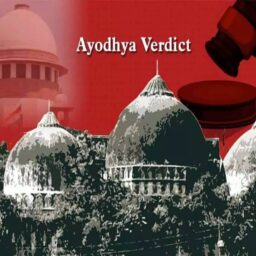INTRODUCTION
Competition law is quite apparently a major economical regulatory field of law and acts as a mechanism to manoeuvre levels of market freedom. The main objective behind formulating such laws is the control over monopolistic markets and the prevention of unethical practices in the economy. The act shuns malpractices in trade and promotes unrestrained and free trading with an approach of punitive repercussions for the violators accordingly. The skewed and unstable market stature that India always suffered from was brought under control through the framing of competition guidelines. These guidelines are hammered exclusively to ensure perfect competition of economic ventures in India and are further governed by a statutory body, namely the competition commission of India. This article will further trace the genesis, expansion, and extant of Competition law in India. The time frame encompassing the entire period of growth for competition law in India can roughly be divided into three phases. The differing levels of growth and modernity had a role to play in setting parameters for different market requirements.
THE POST-INDEPENDENCE ERA
The year’s immediately succeeding independence saw the Indian bureaucrats striving hard to accelerate economic development in the country. The economic frame was gravely flailing and needed liberation from the unhealthy orthodox system of arrangements. Vast acres of land and huge profitable ventures remained concentrated in the hands of a select few, which narrowed down the scope of development. The job handed to the newly found government was to emancipate new rules for bringing the trodden economy at the same pace as that of the other global economies. The first regulatory model that the government came up with was in the form of the policy thatlaid out the provisions of a mixed economy model. The model ensured public interventionist zeal in the market economy which was further sealed by the resolution of 1956. The government wanted to establish itself as a market authoritative body and curb the unfair distribution of wealth and resources. The zamindari and jaghirdari systems were brought to a halt around the same lines, and the state got a collective hold of resources, at least partially so. The private players who had originally been dispossessed of their property now had the provision to obtain permits from the government to carry on with their expanding business ventures. However, the instantaneous impact was the budding growth of non-competitive and corrupt market practices by individual marketers, the impact of which amateur business start-ups could not stand. The rising threat of inequality led to elicit the need for parliamentary legislation.
THE MRTP PERIOD
The need for legislation stirred a series of surveys and studies to identify the reality of the situation and come to a further course of action. The Hazari Committee Report on Industrial Licensing Procedure 1955, revealed the disproportionate and unbalanced outgrowth of industrial and business tycoons, and the unfair position of less resourceful business enthusiasts. The second study, Mahalanobis Committee Report on Distribution and Levels of Income 1964, referred to the concentration of economic power in the hands of a few influential and asset-hoarding people and intensified the failure of the economic model in India along with a severe gap in income distribution. The , the final study which led to the methodization of the final MRTP Act, also focused upon the exorbitant gaps in income and industry-wide distribution the study further commented on the unfair and restrictive trade practices prevalent in the country. The commission eventually suggested and facilitated the promulgation of the Monopolies and restrictive trade practices act, 1969, which aimed at reducing the concentration of economic power in the hands of a few.
The MRTP Act led to the establishment of the MRTP commission which was a quasi-judicial body, regulated by the act itself and focused primarily on avoiding economic and financial accumulation within rich businesses, flushing out unfair and restrictive trade practices, and putting a stop to unethical trading measures. The commission, however, fully functional and operational, lacked certain essential provisions. The commission was devoid of a proper advocacy measure and did not specify penalties for violators of the statute. The commission did not lay directly under the impact of government bodies as no provision allowed it to seek a response for governance. And the biggest identified concern was that though it demurred economic concentration of power, it did not ostensibly promote healthy market competition. These shortcomings once again necessitated the repealing and refinement of the statute which came about in 2002.
FORMATION OF THE COMPETITION COMMISSION OF INDIA (CCI)
The various pinned issues of the MRTP Act and commission led to the appointment of several committees for investigating and fermenting a better solution. There was a specific need for a structured framework, to regulate the requirements of fair competition in India. Another report by a committee with its regulatory head, Dr. S. Chakravarty, pointed out the fragmented interaction between trade and competition in India and stressed issues such as amalgamation, merger, investment, acquisitions, foreign securities, and anti-dumping measures. Another High-level committee was constituted under the head of S. V. S Raghavan, to embark upon the proposed legislative amendment and formulation. The Parliament started preparing a draft bill in 2000 on the new rules of competition to shoulder the constantly evolving Indian economy and to smother the present model that existed. After review and scrutiny by various Parliamentary standing committees, the bill was decreed as law and adopted as the Competition Act in 2002.
The Act led to the establishment of the Competition Commission of India (CCI), a quasi-judicial body, in charge of expounding upon matters related to violation of the Act. The newly-founded Act is remarkably aimed at not only bringing down economic concentration but also, at promoting healthy competitive practices. The Act was implemented in two stages to realize its full effect on the economic laws that it sought to handle. The Competition Act forbids and penalizes all kinds of unfair and disincentivizing practices in the market, including both vertical and horizontal agreements. . The competition act thus outlawed restrictive and monopolistic trade practices and continues to stride ahead with the motive of realizing lawful utilization of resources.
Conclusion
A brief history of the progression of competition law is thus traced in the article in a few summarised points. The competition law remains a field of awe and speculation and much needs to be done and explored further to arrive at a satisfactory ending. The provisions of the competition act are yet to be enacted in their full spirit in India and as per the transient trail of economic development, we might need to reform or amend the Act. However, that is for future governance to look into and contemplate to preserve a robust economic stature.
Author(s) Name: Anjali Shah (Hidaytullah National Law University, Raipur)















